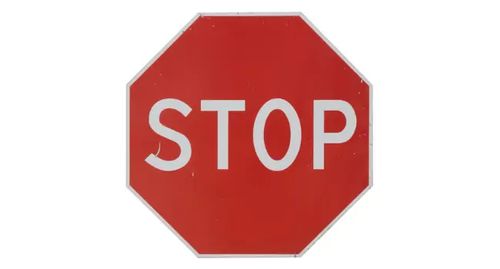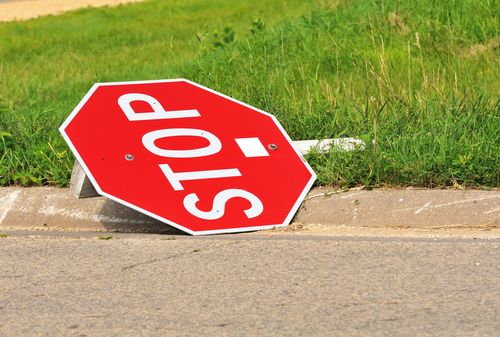New York Stop Sign Tickets Lawyer

Running a stop sign is a common ticket in New York. However, a New York stop sign tickets lawyer can help you understand your options and assist you in working towards minimizing or eliminating the potential penalties.
1172(a) of the NYS VTL is the specific stop sign section. The relevant part of this law states:
Except when directed to proceed by a police officer, every driver of a vehicle approaching a stop sign shall stop at a clearly marked stop line, but if none, then shall stop before entering the crosswalk on the near side of the intersection, or in the event there is no crosswalk, at the point nearest the intersecting roadway where the driver has a view of the approaching traffic on the intersecting roadway before entering the intersection.

1142 of the VTL also deals with the concept of “yielding” the right of way to other vehicles you might encounter in the intersection after stopping at a stop sign. The emphasis there is on not entering the intersection until you are certain you won’t be hitting another vehicle. This section points to 1172 (the actual stop sign section) for the rules regarding stopping your vehicle and then section 1142 comes into play if there’s a problem with yielding to other vehicles after coming to a completed stop.
Essentially, the law set forth that you must stop when at a stop sign. The stop sign section of law is mostly about where to stop.
- If there’s a stop line, stop there.
- If there’s just a crosswalk and no stop sign, then stop before entering the crosswalk.
- If there’s neither a stop line nor a crosswalk, then stop at the point nearest to the intersection where you have a view of the intersection.
The discussion of where to stop is really just a theoretical one. In just about any case where a motorist has been charged with disobeying a stop sign, it’s about a failure to come to a complete stop at any point prior to entering the intersection. Rarely if ever will you see an officer admit the vehicle stopped but argue it stopped at the wrong place.
WHAT ARE THE PENALTIES FOR RUNNING A STOP SIGN IN NY?
Running a stop sign carries significant penalties. Fines and surcharges can vary depending on your driving record and which court is handling the case but the vast majority of fines would fall in the $150 to $350 range. In addition to any fines and surcharges due, 3 points will be added to your license.
If you accumulate 11 points within 18 months, your license will be suspended. Just 6 points in any 18 month means you will be charged a Driver Responsibility Assessment of of at least $300. In addition, running a stop sign is certainly something that could lead to an increase in your insurance premiums.
When fighting a New York stop sign ticket at a small hearing or trial, there are a few arguments that your lawyer may use in court to help discredit the officer’s case. These can include:
- The stop sign was difficult or impossible to see due to the position of trees, bushes or other obstructions
- The line where the driver was required to stop was faded or otherwise impossible to see.
- If you have a dash cam, showing you came to a complete stop before continuing through the intersection (note you can argue this in court without video evidence but just stating "I didn't do it" rarely will work on any traffic violation charge)
What won’t work is feigning ignorance about the about the law or arguing that this was a new sign and you didn’t notice it. It’s every driver’s responsibility to know state laws about stop signs, as well recognize the existence of stop signs no matter how new they may be.
GET HELP FROM A NEW YORK TRAFFIC TICKET LAWYER
If you have been issued a stop sign ticket, you have options. Our attorneys may be able to get your charges reduced to a lesser infraction or get the ticket dropped altogether.
Call us at (888) 842-5384 (TicketHELP) or contact us online for a free, no-obligation consultation with a New York traffic ticket lawyer today.
GOT A TRAFFIC TICKET? CALL OUR ATTORNEYS AT 888-842-5384
ANYTIME, WE’RE HERE TO HELP
FREE CASE EVALUATION


